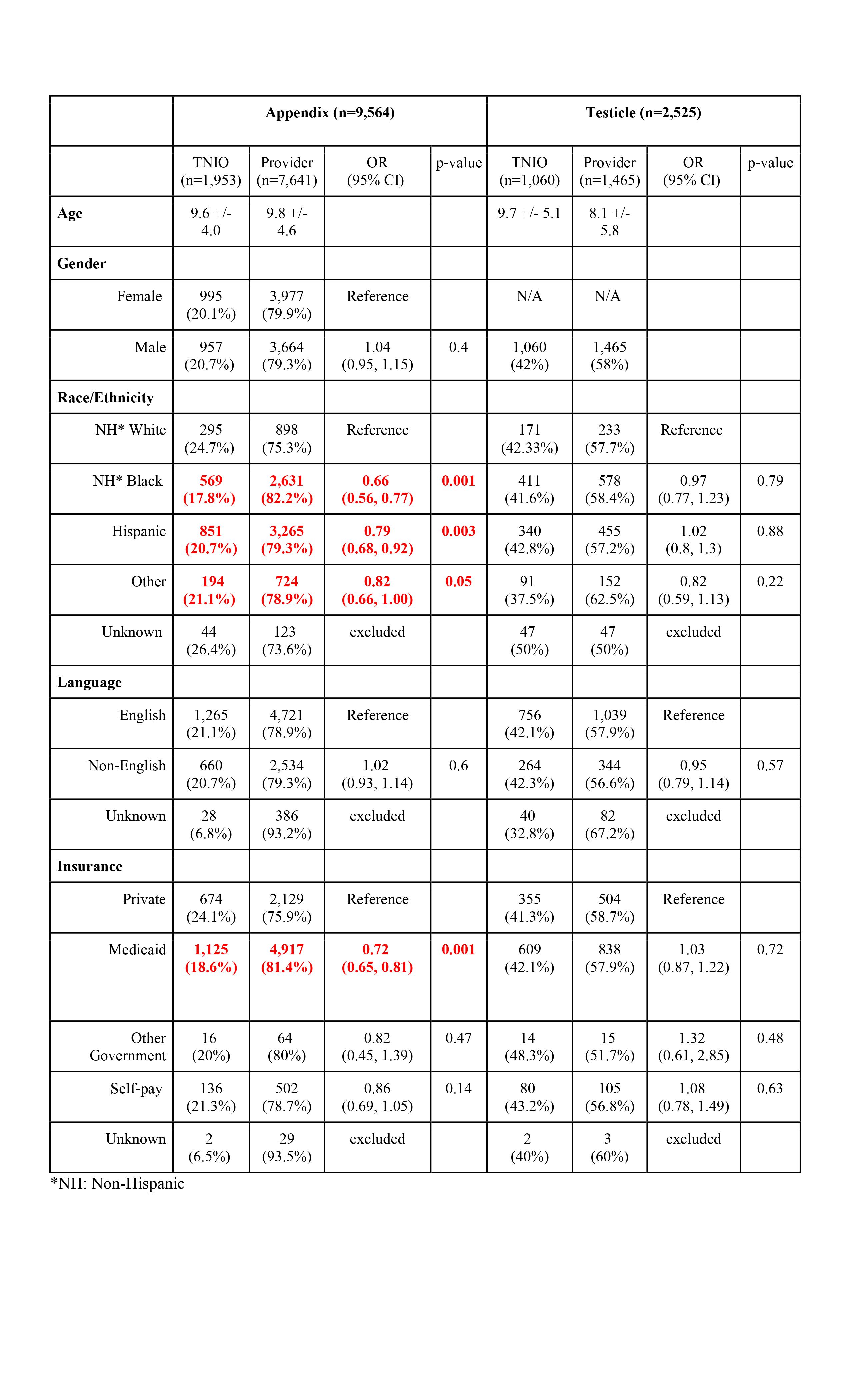Emergency Medicine
Session: Emergency Medicine 7: Emergency Medical Services
211 - Evaluation of Triage Nurse-Initiated Imaging Orders in a Pediatric Emergency Department
Sunday, May 5, 2024
3:30 PM - 6:00 PM ET
Poster Number: 211
Publication Number: 211.1722
Publication Number: 211.1722

Brandon Ho, MD
Pediatric Emergency Medicine Fellow
Children's National Hospital
Washington, District of Columbia, United States
Presenting Author(s)
Background: Triage nurse-initiated imaging orders (TNIO) have emerged as a promising strategy to enhance care efficiency and reduce emergency department (ED) length of stay (LOS). This study aims to investigate the impact of TNIO on LOS among pediatric patients presenting with symptoms suggestive of appendicitis or testicular torsion.
Objective: The primary objectives of this study were to measure the baseline utilization of triage nurse-initiated appendix and testicular ultrasounds and evaluate their impact on LOS in a pediatric ED. The secondary objectives included evaluating the diagnostic accuracy of TNIO and its effect on patient outcomes.
Design/Methods: A single-center, retrospective cohort study of patients aged 0 to 18 years who presented to our pediatric ED between January 2018 and June 2023 with clinical suspicion of appendicitis or testicular torsion. Patients were analyzed based on two groups: those who received nurse-initiated ultrasound orders and those who underwent physician-initiated imaging. LOS, diagnostic accuracy, and patient outcomes were compared between the two groups. Descriptive statistics and multivariable linear regression analysis were performed.
Results: Of 9,564 appendix and 2,525 testicular ultrasounds, 1,953 (20.4%) appendix and 1,060 (42%) testicular ultrasounds were nurse-initiated. Medicaid patients and those of Black, Hispanic, and Other non-white races had a lower likelihood of receiving nurse-initiated appendix ultrasounds (Table 1). TNIO reduced LOS by 48.2 minutes (p= < 0.001) in the appendix ultrasound group and 53.7 minutes (p= < 0.001) in the testicular ultrasound group. TNIO successfully identified 24.8% of cases of acute appendicitis and 51.4% of cases of testicular torsion; the remaining cases were diagnosed based on imaging obtained after provider evaluation. Notably, the nurse-initiated group experienced fewer unscheduled returns (appendix: 4.9% vs 6.7%, p=0.001; testicular: 4.0% vs 7.3%, p= < 0.001) but witnessed an increase in patients leaving without being seen (appendix: 3.1% vs 0.3%, p= < 0.001; testicular: 3.5% vs 0.3%, p= < 0.001).
Conclusion(s): Triage nurse-initiated ultrasound orders for pediatric patients with suspected appendicitis and testicular torsion in the ED exhibit a significant reduction in LOS. Implementing triage nurse-initiated imaging protocols could optimize the care of pediatric patients with these conditions, ultimately improving ED efficiency and patient satisfaction.

